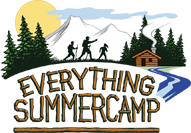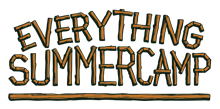Hey, Straw-Sippers!
At first glance, one would easily assume that straws are a frill of the modern day—something that likely came around about the same time as 1950s diners and fast food chains. But they go back much further than that! Nowadays, we’ve got straws made from a variety of materials. The most common that you’ll find here at Everything Summer Camp are plastic—but not the disposable sort, utilized within a water bottle. Otherwise, there are metal straws, paper straws, disposable plastic straws, and more.

Still I’m sure none of you have used a straw like the first ones ever made. Older than the invention of paper itself, history tells us straws were first invented 6 to 7000 years ago by the ancient Mesopotamians who crafted them out of wood and sometimes gold! The purpose came in warmer, buggier climates, making it easy to avoid any insects that may have landed in their drinks.
The 1800s brought about new methods and materials for construction as well as an increase in popularity for this ancient drinking method.

Why Not Rye?
The Industrial Revolution in America saw straws getting made from organic elements. Popular materials were rye and wheat grains. These straws—rye especially—would lend a grass-like taste to a beverage. They’d also get soggy quickly. People were ultimately left unimpressed. While the public appreciated the concept, they saw plenty of room for improvement. At least one American inventor, Marvin Stone, did.
Stone’s Straws
Marvin Stone came up with the paper straw which proved to be far superior to the grain straws, both in sustainability and consumer-friendliness. Marvin’s family was already in the business of tubular products such as pencil sharpeners, giving him an edge on straw manufacturing of a large scale. He determined the perfect straw length and width—8.5 inches by 21.5 centimeters. And he developed his manufacturing process: wrap pencils in paper, glue the paper, remove the pencil.
Drastic Plastic
A sudden boom of fast-food restaurants in the 20th Century brought a great demand for disposable plastics such as cutlery and straws. Novelty straws only upped the plastic game with patents like Slurpee Straws and Crazy Straws. For whatever reason, plastic straws were pushed and normalized for over 60 years, kicking paper straws aside despite their obvious benefit to the environment over plastic.
The fight against disposable plastic straws is being fought with reusable water bottles as well as reusable straws. Do your part and shop our selection when you click right here. And, as always, thanks for reading, Camp Folks! Till next time.
- John







